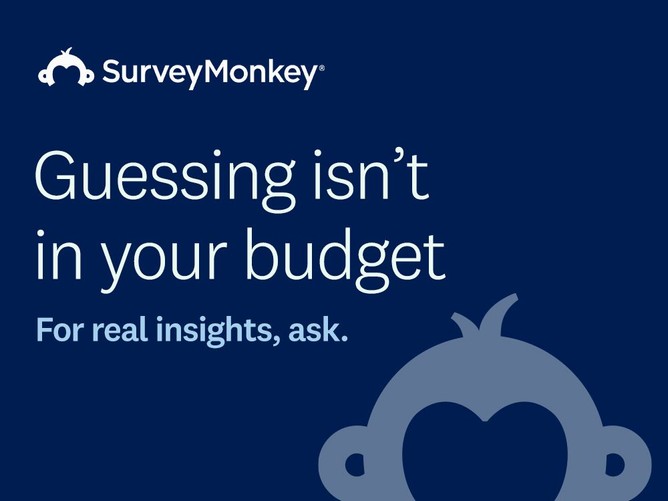It’s Wednesday. Halloween has once again come and gone, and S&P Research estimated that consumers spent a record $3.9 billion on treats this year. Here’s the real jump scare: candy prices were up 7.2% this year.
In today’s edition:
—Ryan Barwick, Kelsey Sutton, Alyssa Meyers
|
|
Dianna “Mick” McDougall
Beep. Beep. Beeeeeep. That’s the sound of the IP address as an identifier on life support.
In mid-October, Google announced that it planned to begin experimenting with a feature that cloaks users’ IP addresses within its Chrome browser, following in the footsteps of Apple, which in 2021 began hiding user IP addresses in Safari and Mail by default.
The feature is called IP Protection (formerly Gnatcatcher, which sounds cooler, tbh), and it will limit IP tracking by third parties. IP addresses, a unique series of digits that identify a particular device online, can, over time, create a “persistent user profile and track a user’s activity across the web, which represents a threat to their privacy,” Google engineers previously explained in a note posted to GitHub.
The tech will be opt-in for US users to start, will roll out in phases, and will be available as a core feature within Chrome. Google spokesperson Scott Westover confirmed the company’s intent to experiment but told Marketing Brew that the company didn’t have any more details to share.
If the proposal is adopted, it would mean that two of the largest web browsers will be limiting a signal that’s frequently been used by adtech companies to target advertisements, cap ad frequency, and even detect ad fraud. Chrome is the most popular web browser in the US, with a 46% market share, while Apple’s Safari owns 43% of the market, according to Similarweb.
Since IP Protection will only block third-party access to start, publishers will still have access to users’ IP addresses, and will still be able to use that data to understand their readers and viewers. However, their programmatic partners could lose that access, depending on how Google rolls out the feature, which could be “extremely disruptive” for the adtech companies that create identifiers or target households based on IP addresses, Mike O’Sullivan, the founder of Sincera, said.
“This will completely blow [that strategy] out of the water,” he said.
Read more here.—RB
|
|
PRESENTED BY SURVEYMONKEY
|
It’s one of the oldest sayings in the business. But it’s a classic for a reason: Knowing your audience (and we mean truly knowing them) lets you craft campaigns that tip the scales in your favor and leave your competitors in the dust.
Let SurveyMonkey give you the upper hand. The SurveyMonkey platform empowers today’s decision-makers with faster time to insights. Better understand your target audience, stay on top of market trends, and create campaigns that really speak to the needs of your customers.
With SurveyMonkey, marketers get the insights they need to:
- attract new customers with compelling campaigns
- keep customers happy by delivering exceptional experiences
- drive brand growth by identifying new market opportunities
Start winning with customer and market insights.
|
|
Netflix
Netflix’s ad-supported tier has 15 million monthly active users globally, the streamer announced Wednesday.
The figure, which Netflix disclosed as part of a one-year update on its ads business after branching out into advertising last November, marks a considerable jump from the nearly 5 million monthly active users the ads plan had in May during the company’s first-ever upfront. It’s an indication that the company’s efforts to encourage ad-supported adoption by raising the price of ad-free viewing might be working.
“We want to shape the future of advertising on Netflix and help marketers tap into the amazing fandom generated by our must-watch shows and movies,” Amy Reinhard, Netflix’s newly minted president of advertising, said in a company blog post.
Coming up: As Netflix continues to push into advertising, it has some new ad formats waiting in the wings. By the end of this year in the US, Netflix will roll out “Moment Sponsorships,” where local holidays and other cultural moments will be available for advertisers to sponsor. (That format, along with other sponsorship opportunities, will roll out globally in 2024.) The company is opening up title-level sponsorships on reality shows like Squid Game: The Challenge, on dramas like The Crown, and on the company’s forays into live sports, including The Netflix Cup golf tournament, which will air later this month.
And in early 2024, Netflix will allow advertisers to place QR codes into ad creative on US-based campaigns, Reinhard announced.
But advertisers will have to wait a little bit longer for Netflix’s forthcoming binge ad format, which VP of global advertising sales Peter Naylor announced during Advertising Week. The format, in which advertisers will be able to sponsor an episode of ad-free viewing after viewers have watched more than three consecutive episodes of television, will also roll out in Q1 of 2024, not later this year, as previously announced.
Read more here.—KS
|
|
Daniel Grizelj/Getty Images
The holiday season is right around the corner. Consider this a reminder that it’s time to start buying gifts—or advertising them.
Many people have likely started shopping already, but the biggest spending season for marketers is coming up, according to research conducted by Comscore’s programmatic division Proximic and ad-tech platform Nexxen.
The companies’ Holiday Checklist, which analyzed surveys, data, and trends, found that more than half of marketers plan to spend the bulk of their holiday budgets next month, primarily on digital channels and through direct buys.
Locked in: Almost 75% of holiday budgets are finalized by September, and 97% by October, according to a Comscore industry survey of marketers who manage programmatic holiday ad budgets. (Shoutout to the procrastinators: 3% of respondents said they aren’t locking in their budgets until November or later.)
- November is when that spend really starts to play out, though, with 53% of respondents saying that’s when they’ll exhaust most of their holiday budget.
- About one-third (34%) said they’ll spend the most in December.
- Concerns about a recession or inflation seem to be fading among the marketers surveyed, with 86% saying they plan to spend at least as much on holiday ads this year as they did last.
Change the channel: Marketers appear to be leaning most into desktop and mobile ads this holiday season compared to other channels, according to the report.
- About four in five (79%) of marketers said they plan to run website or browser ads on desktop and mobile devices, excluding social media platforms.
- A slightly smaller share said they plan to air CTV or OTT ads (74%).
-
Linear trails, with 51% of marketers planning to leverage that channel for the holidays.
- About one-quarter (27%) said they’d run audio ads.
Read more here.—AM
|
|
TOGETHER WITH AMERICAN EXPRESS BUSINESS
|
|
New benefits, smarter rewards. Take your business further with the American Express® Business Gold Card, now smarter and more flexible. It’s packed with enhanced benefits to help unlock more business value—all with the powerful backing of American Express. Learn more here.
|
|
Morning Brew
There are a lot of bad marketing tips out there. These aren’t those.
Guidebook: All you need to know about marketing on LinkedIn.
Bots: Get up to speed on Meta’s custom AI chatbot experiment, where users will be able to create chatbots modeled after their own voices.
Blocks: The question of whether public officials can block you on social media goes to the Supreme Court.
Real results: The trick to driving ROI? Knowing your customers like the back of your hand. SurveyMonkey can help. They provide faster insights that let you deliver top-notch campaigns. Crush the numbers.*
Free money: Want a complimentary $250 AmEx gift card in your pocket? Don’t answer that—just fill out this survey for your chance to win. Get goin’.*
*A message from our sponsor.
|
|
Stat: Tech companies have spent at least $40 million advertising AI products this year, according to MediaRadar.
Quote: “That first-time experience is what hooked people…The first time you use it, I think it’s almost a spiritual experience. You go, ‘Oh my God, this computer seems to understand.’”—OpenAI’s chief scientist Ilya Sutskever talking to MIT Tech Review about the success of ChatGPT
Read: ScareBnbs rise in popularity as renters seek out the supernatural (The Guardian)
|
|
ADVERTISE
//
CAREERS
//
SHOP
//
FAQ
Update your email preferences or unsubscribe
here.
View our privacy policy
here.
Copyright ©
2023
Morning Brew. All rights reserved.
22 W 19th St, 4th Floor, New York, NY 10011
|
|








